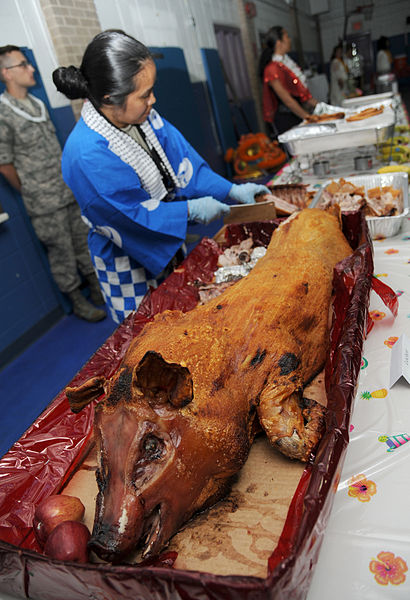In a follow-up to a report on the salmonella outbreak that has sickened scores in Washington State, federal food safety officials have issued a warning when handling whole pigs for roasting.

The U.S. Department of Agriculture’s Food Safety and Inspection Service (FSIS) issued a public health alert on Friday after being notified of the several clusters of the rare strain of the bacterium, Salmonella I 4,[5],12:i- in mid-July.
FSIS suspects that there is a link between the illnesses associated with whole pigs used for pig roasts and eight illness clusters based on information gathered in conjunction with the Washington State Department of Health and the Centers for Disease Control and Prevention (CDC). Case-patients have been identified in Washington with illness onset dates ranging from April 25, 2015 to July 21, 2015.
This investigation is ongoing. FSIS continues to work with the Washington State Department of Health and the CDC on this investigation. Updated information will be provided as it becomes available.
Roasting a pig is a complex undertaking with numerous potential food handling issues. FSIS urges consumers to keep the four food safety steps in mind: Clean, Separate, Cook, and Chill.
- CLEAN: Obtain your pig from a reputable supplier. Have the supplier wrap it in plastic, or a large plastic bag to contain the juices. Keep the pig cold until it is time to cook it. If you can’t keep it under refrigeration or on ice, consider picking it up just before you are ready to cook it.
- SEPARATE: Anything that comes into contact with whole pig should be washed with hot soapy water afterwards. This includes hands and utensils.
- COOK: FSIS recommends that all pork products are cooked to a minimum internal temperature of 145º F with a three minute rest time. Make sure to check the internal temperature with a food thermometer in several places. Check the temperature frequently and replenish wood or coals to make sure the fire stays hot. Remove only enough meat from the carcass as you can serve within 1-2 hours.
- CHILL: Once the meat is cooked, transfer to clean serving dishes. Pack leftovers in shallow containers and refrigerate within 1-2 hours. It is not necessary to cool before you refrigerate it.
FSIS advises all consumers to safely prepare their raw meat products, including fresh and frozen items, and only consume pork products (such as pork roast or tenderloin) that have been cooked to a minimum internal temperature of 145° F with a three minute rest time. The only way to confirm that whole pigs are cooked to a temperature high enough to kill harmful bacteria is to use a food thermometer that measures internal temperature, http://1.usa.gov/1cDxcDQ.
Consumption of food contaminated with Salmonella can cause salmonellosis, one of the most common bacterial foodborne illnesses. The most common symptoms of salmonellosis are diarrhea, abdominal cramps, and fever within 12 to 72 hours after exposure to the organism. The illness usually lasts 4 to 7 days. Most people recover without treatment. In some persons, however, the diarrhea may be so severe that the patient needs to be hospitalized. Older adults, infants, and persons with weakened immune systems are more likely to develop a severe illness. Individuals concerned about an illness should contact their health care provider.

